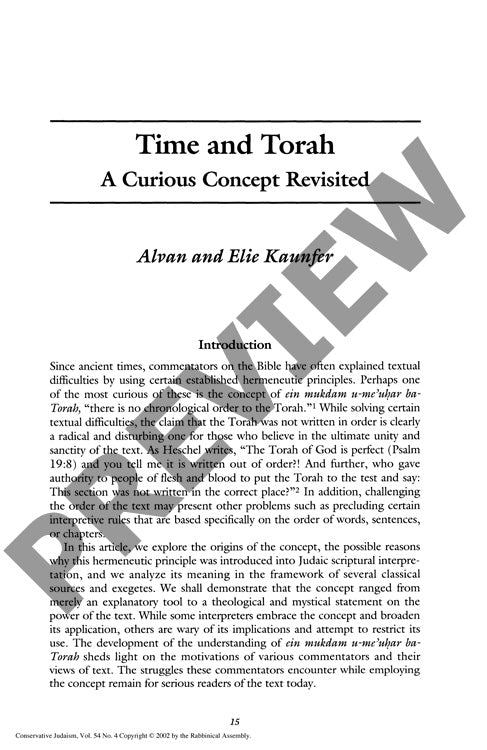Time and Torah a Curious Concept Revisit
Couldn't load pickup availability
The rabbinic principle *ein mukdam u-me'uhar ba-Torah* ("there is no chronological order to the Torah") underwent a remarkable transformation from its origins as a simple tool for resolving biblical timeline discrepancies to becoming a complex theological statement about Scripture's divine nature. Through analysis of classical sources including the Talmud, midrashim, and medieval commentaries, a clear evolution emerges: early authorities like Rabbi Ishmael applied the concept narrowly to resolve obvious textual difficulties, while later interpreters took dramatically divergent paths. The Yerushalmi and *Mishnat Rabbi Eliezer* expanded its application broadly, while others like Rav Papa sought to restrict its use due to theological concerns. Particularly telling are the contrasting approaches of medieval scholars - Rashi's liberal application to midrashic readings, the *Tanhuma's* elevation of the principle to serve theological purposes, and Ramban's severe limitations paired with alternative explanations based on topical organization. These varying interpretations reveal deeper tensions between textual authority and exegetical flexibility in Jewish biblical interpretation, demonstrating how scholars' different approaches to Scripture's perfection and divine origin fundamentally shaped their methodological choices across historical periods.

More Information
-
Physical Description
-
Publication Information
Published 2002
ISBN
-
Publication Credits

